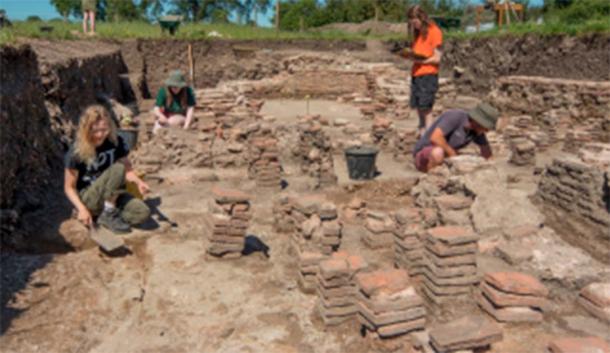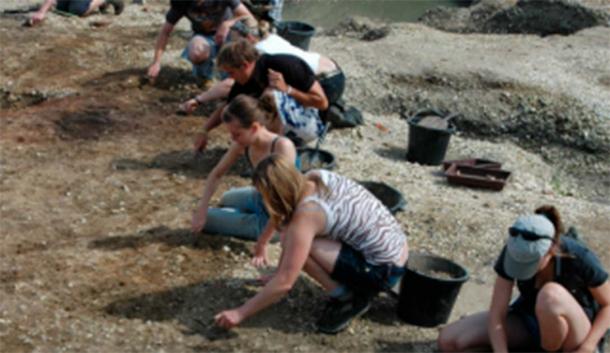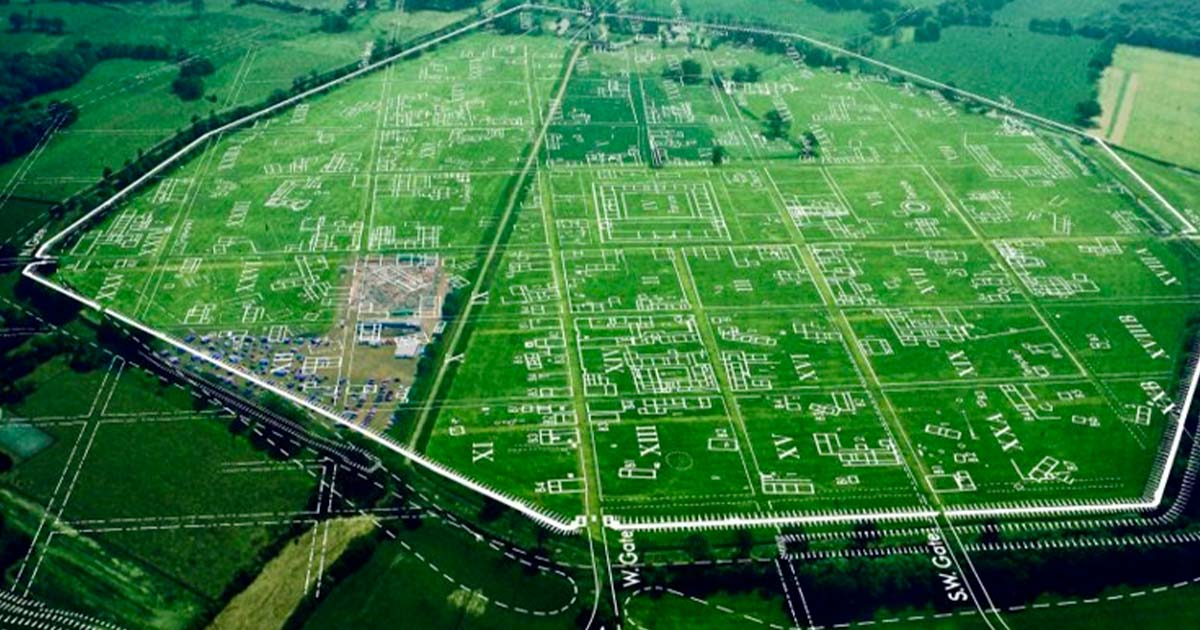Beneath Roman Britain - An Iron Age Settlement Is Revealed At Silchester
Five decades on from the start of an archaeological dig by the University of Reading, the findings of the investigation will be brought to the public, showcasing the incredible discoveries from excavations at the ancient Roman city of Silchester in Hampshire, England. This complex and revealing site became an important Roman town, but was already inhabited by an earlier encroacher to the land, the Atrebates tribe from across the Channel in Northern Gaul.
The University of Reading press release explains how, with the deep historic discoveries that have been made, visitors to the traveling exhibition, Becoming Roman – Silchester, a Town of Change, will be transported back 2000 years to discover what life was like for the French tribe (strictly Belgic) that established the settlement, and how this life changed after the Roman Conquest of Britain.
Pre-Roman Iron Age Britain
When the exploratory forces of Julius Caesar first entered Iron Age Britain, showing their highly organized society and flexing their military muscles, they found a heterogenous society organized into tribes led by their chieftains, who defended their territories from the plentiful hillforts that littered the countryside.
Although these groups had arrived at the shores of Britain from various areas around Western and Northern Europe, some no doubt forced there due to territorial troubles in their own homelands, the Romans (and Greeks) referred to them homogeneously as ‘Celts’, as they shared some related languages and cultural traits.
- Danebury Fort, the Formidable Home of Iron Age Britons
- 30 Stunning Roman Intaglios Discovered at Hadrian's Wall Bathhouse Site

The Roman amphitheater at Silchester. (Howard Stanbury/CC BY-SA 2.0 DEED)
Although not without their own customs, laws and culture, these tribes were a cosmopolitan collection of original Britons and Europeans, and so there was little uniformity in this society.
These divisions meant the land as a whole was rife with territorial battles, and little centralized authority existed. And so, when Claudius’s military machine arrived in 43 AD, these petty skirmishes were dwarfed. The whole landscape would be changed, both physically and ideologically, as the order of the Roman Empire was forced upon these peoples, all but stamping out the existing collection of cultures that existed there.
The extensive excavations at Silchester have brought insights not only into the Roman colony city of Calleva Atrebatum, but also beyond this to what existed before, the Iron Age town of Calleva, and the people that once thrived there.
Professor Michael Fulford, of the University of Reading, and Director of the Silchester Town Life Project commented:
“It is wonderful to contribute to an exhibition which showcases some of the great discoveries from the University of Reading's excavations at Silchester. The objects on display range from those illustrating the international contacts of the Iron Age town beneath the Romans to those that show how life changed after the Roman conquest.”
Artifacts Spanning the Eras
Among the 150 objects on display will be terracotta floor tiles which still retain the footprints of dogs, weasels, birds and children from when they were left out to dry, a huge Roman grain storage jar which will be on display for the first time since undergoing major restoration, exquisite examples of carved gemstones and a Roman roof tile with a Nero stamp on it.
- How Gaul ‘Barbarians’ Influenced Ancient Roman Religion
- Fighting in the Buff: Did Celtic Warriors Really Go to War Naked?

Dogs and intricate designs have decorated the many terracotta tiles produced at the site. (University of Reading)
Iron Age at Silchester – the Atrebate Town of Calleva
Silchester was a wealthy capital with its own Iron Age mint, and evidence from the site shows that it traded not only with other tribes in Britain but also across Europe to the Roman world of the Mediterranean.
Alongside their trade skills, they were adept at metal work, with chariot fittings and a smithy uncovered during the dig.
Other discoveries give a more emotive insight into Iron Age life: these include the skeleton of what is thought to be the first lap dog in Britain, imported from across the Channel.

Students and local volunteers have contributed to the excavations over the past 50 years. (University of Reading)
With the Romans came inevitable change. At the exhibition, visitors will learn how the Iron Age settlement with its signature round houses transitioned with the introduction of a Roman street grid and buildings such as a forum and a bath house.
How a Roman bath house worked, with its complex underfloor system of heat and gas, will be explored at the exhibition, and on display in this section will be hair pins and jewelry, personal items lost or left behind by bath house users.
Nick Suffolk, Head of Heritage Experience at Hampshire Cultural Trust, commented:
“Becoming Roman – Silchester, a Town of Change contains so many objects that give us a frozen moment in time; from a footprint on a drying floor tile to hairpins lost in the Roman baths and coins dropped in the forum. These little, everyday occurrences and misfortunes allow us to connect emotionally with the daily life of someone living thousands of years ago.”
Becoming Roman – Silchester, a Town of Change, will tour the Red House Museum in Christchurch, Andover Museum, The new exhibition begins its tour at the Willis Museum and Sainsbury Gallery in Basingstoke on Saturday 10 February and will close on Sunday, 28 April.
Top image: The Roman city at Silchester with the grid road system and building locations map overlaid. Source: University of Reading
By Gary Manners
References
The British Museum. The Iron Age in Britain. Available at: https://artsandculture.google.com/story/celtic-life-in-iron-age-britain-the-british-museum/_AWRz1O9u3piJg?hl=en
University of Reading. 2024. Iron age town discoveries displayed 50 years after first dig. Available at: https://www.reading.ac.uk/news/2024/Research-News/Iron-age-town-discoveries-displayed-50-years-after-first-dig

















